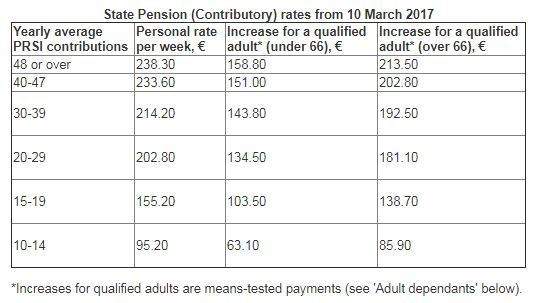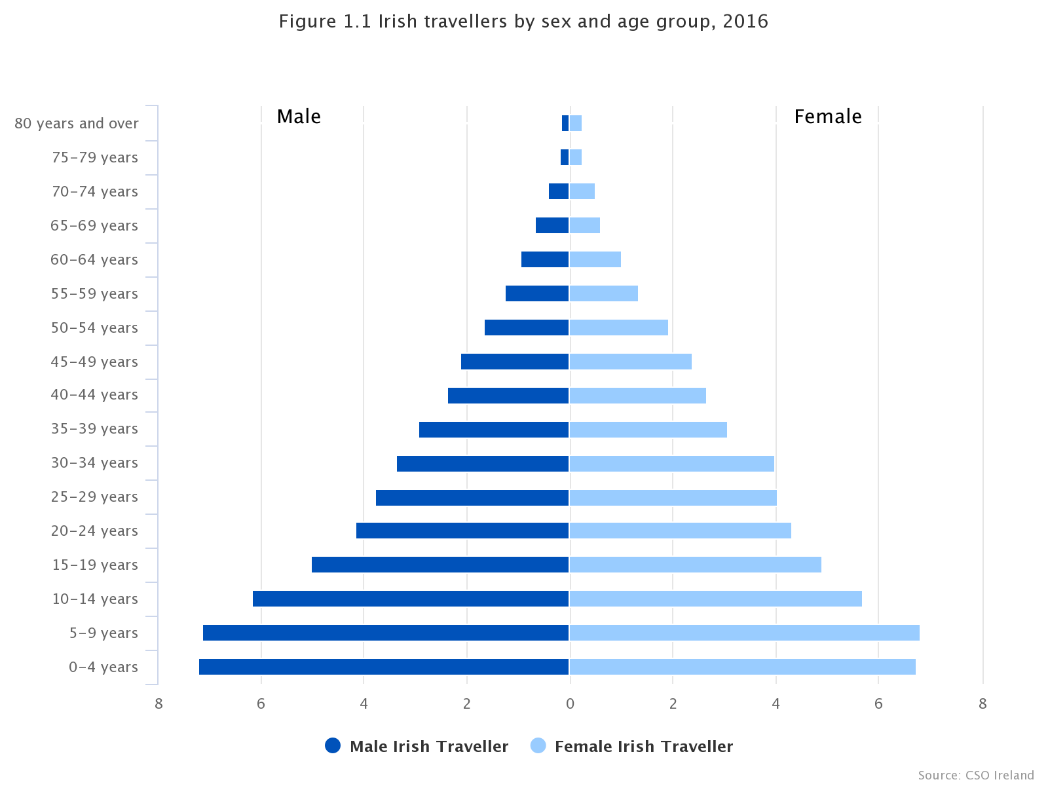Strategies for Positive Aging and Retirement
| ✅ Paper Type: Free Essay | ✅ Subject: Health And Social Care |
| ✅ Wordcount: 4346 words | ✅ Published: 23 Sep 2019 |
Question 1:
The Role of the carer/organisation in promoting positive attitudes to ageing and retirement
Ageing is an inevitable, irreversible process but is not necessarily negative. Ageing does not start at 65 years, it is not a sudden event. It begins at birth and continues until death. Ageing and retirement in Ireland has gone through many changes in recent years with the increase in qualifying age for both retirement and pension entitlements. There has been a significant increase in our older population aged 65 and over. In 2006 this figure was 468,000, by 2041 this figure is set to increase substantially to 1.4 million. In March 2018 Ireland has 456 people aged 100 years and over. It is predicted that 50% of female children born today may live to be 100 years or older. Over the past decade in Ireland, the life expectancy of people living here has increased by 2.5 years. Due to the increase in life expectancy in Ireland a focus has now come on health promotion and positive ageing for our older generation. As our ageing population grows so does the need for organisations and carers in promoting positive ageing in our society. It is now vital that our ideals of ageing healthy are been promoted and utilised by our ageing population to increase their quality of life through physical, social, intellectual and emotional opportunities. In 2008 Ireland developed The National Positive Ageing Strategy with the vision of making Ireland a good country in which to grow old in the years ahead.


Healthy and positive ageing means optimising opportunities for physical, social and mental health to enable older people to take an active part in society without discrimination and to enjoy an independent and good quality of life.
“If you believe that achievement ends with retirement, you will slowly fade away. First of all, keeping the mind active is one way to prolong your life and to enjoy life to its fullest for as long as possible – Byron Pulsifer
The Role of the Organisations:
In Ireland today there are many organisations who are involved in promoting healthy ageing. In recent years there has been a major focus and strategies put in place by these organisations due to our ageing population. These organisations help to promote healthy ageing through a range of services. The main focus of the organisations is to promote healthy ageing through physical, intellectual, emotional and social services. Most of the organisations are voluntary groups.
A key purpose of organisations is to promote positive attitudes to ageing as the belief is this can increase quality of life. Some organisations provide lifelong learning and education for older people such as training in new technology or computer training. This enables the older person to keep up to date with new advances and equipment and make them more self-reliant. This can also help to keep older people mentally stimulated and an active member of society. It also can help older people to stay connected to family or friends who maybe have moved away through using the new technology for skype or facetime.
One of the major issues affecting our ageing population is isolation and loneliness. Most of the organisations provide a range of services to help combat this issue. They provide transport for older people to access social groups and activities in their locality. Some provide home visitation, telephone befriending service, social clubs, day tours and weekends away. This is to ensure that they are still feeling connected and involved in their community. By facilitating these outings and activities older people are staying active and having a varied and enjoyable social life. It can also be an outlet for older people to reminisce and share life experiences.
Other organisations are promoting positive ageing by campaigning and being a voice for the older people. They are campaigning against poor housing and poverty. By being an advocate on these issues they are raising awareness and hoping to find solutions to these issues. They are providing funding and assistance to older people with fuel costs, minor house repairs, damaged furniture and insulation. By doing this the older people feel safe and secure in their homes. It can help them preserve their independence and antonomy.
Organisations provide education and raise awareness on some common conditions and risks that may occur with ageing. This can allow older people to be more familiar with signs and symptoms that are associated with these illnesses or conditions. It is with the goal that this will lead to early diagnosis, and improved outcomes for recovery.
Overall organisations are trying to promote healthy and positive ageing through a holistic approach to ageing. There main objective is to achieve a more positive attitude to ageing through their services, with the hope of increasing quality of life and promoting more healthy lifestyle choices for older people.

Friends of the Elderly is a voluntary organisation which was founded in 1980 in Dublin. Its main objective is to offer friendship and companionship to the ageing community in Ireland. This services are provided through volunteers who are fully garda vetted and trained. It is a free and confidential service which is available to the older community.
They offer a range of services which main focus is to lessen the feelings of loneliness and isolation to the ageing population. It provides social engagement programmes which include home visitations, friendly call service, social clubs, day trips and social events. Its aim is to enable older members of society to maintain their independence but still feel like active members of a larger community. Volunteers will visit and telephone older people in their own homes. In providing these social events, transport and activities they are promoting feelings of independence and inclusion. It gives older people a sense of purpose and self-worth as they are remembered and valued in their community.
Loneliness and social isolation can affect everyone but older people are particularly vulnerable!
Friends of the Elderly Ireland
The Role of the Carer:
Promoting positive attitudes to ageing starts with the carer. The carer will probably be the person that spends the most time with the client. The carer needs to have a person centre care approach to help promote positive ageing attitudes.
Open communication is essential to help achieve positives, this can be started with always calling a person by their name each day to help preserve their identity – no elder speak. In just the last few weeks elder speak has been prohibited in both nursing homes and hospitals. In calling a person by their name it helps the carer to focus on the person and also the older person feels like they have your attention.
When the carer is about to undertake tasks with the client the manner in which this is approached should always involve the client. The carer should take the time to explain what they are going to do, ask the client is this ok and give the client some choices whether it be a certain jumper or socks. This can help the client to feel like they are involved in their own decision making.
The carer should always be trying to promote independence and only assist where necessary to avoid ‘learned helplessness’. The carer should be focused on the client’s strengths allowing the client to do what they are able to do.
In promoting healthy attitudes the carer should take the time to communicate openly with the clients. The carer should have reviewed the clients care plan allowing them to be able to have a discussion with the clients about topics that may be important to them. Each client may have their own spiritual beliefs and sets of values the carer must respect these at all times.
In communicating with the client the carer should always be conscious of body language, tone of voice and eye contact. If the carer is trying to promote positive attitudes they should be actively listening to their clients, they should never dismiss a client’s worry or concern. The carer should be encouraging their clients to express themselves freely without fear of judgement or dismissal of their worries or anxiety.
In promoting healthy attitudes the carer should be looking at all aspects of the client’s health this should include physical, intellectual, emotional and social.
The carer can promote these aspects through a range of activities. This could include accompanying the client to GP visits or social activities if they client is unable to attend independently. This is still promoting positive attitudes as the clients is still socialising, getting physical activity and maybe some mental stimulation.
Aging is not lost youth but a new stage of opportunity and strength.” ~Betty Friedan
Question 2:
Ethnic and cultural influences on the older person in relation to retirement
‘Culture can be defined as a ‘way of life of groups of people. Culture refers to the cumulative deposit of knowledge, experience, beliefs, values, attitudes, religions, roles and material objects and possessions acquired by a group of people’.
www.yourdictionary.com/culture
‘Ethnic can be defined as large groups of people classed according to common racial, national, tribal, religious or cultural origin or backgrounds. Ethnic is relating to a population subgroup with a common national or cultural tradition’.
www.merriam-webster.com/dictionary/ethnic
Culture can have a huge impact on ageing and retirement. Throughout the world culture can influence attitudes, entitlements, retirement age and values towards older people. Older people are often stereotyped with perceptions being both positive and negative, numerous cultures would hold a more negative than positive attitude towards ageing. Some cultures may view the older person as having nothing left to contribute to society. While other cultures hold the older person in very high regard and look to them for their wealth of experience, knowledge and wisdom. Throughout different cultures retirement age and entitlements differ this can be a reflection of life expectancy and what a culture may perceive as old age.
Japan 
Population: 126.8 million
25.9% of population aged 65+
12.5 % of population aged 75+
65,000 aged 100+
Japan is the fastest ageing country in the world. Japan has the ideals of ageing as living independently without relying on their children and continuing to undertake new challenges. Japan has several strategy’s put in place to help deal with its ageing population. Japan has promoted positive attitudes to ageing in its older people through healthy diet, devotion to their spiritual beliefs and continuing to hold a daily sense of purpose. In Japan the majority of its population hold a positive attitude to death, it is not seen as something to fear and they believe that quality of life is more important than extending life.
Japans culture differs to other county as they are the first country in the world to have a scheme called ‘ticket for a caring relationship’. This is a scheme that rewards people with ‘time credits’ for volunteering to help the elderly or disabled. It’s where citizens can claim back the credits for their own care in later life. It allows a volunteer to bank hours they spend helping an older person in their own personal time. This scheme was developed to promote the population to assist in the caring of the older population and try to encourage the older people after their retirement to continue working or volunteering.
Japan In 2002 introduced long term care insurance, the aim was to reduce the burden of care on families and also to decrease the growing demand for pensions from the government. This is a mandatory payment for all citizens aged 40 or above. The long term insurance does not cover all care and Japan is still reliant on volunteers caring who widely aged 65 are or over themselves.
Retirement age is 65 but the government hope to gradually increase this to 68. Pension entitlements are paid from age 65, all pensions are based on contributions that have been made throughout your working life, and the payment is graded on a sliding scale from contributions made. This generation of Japanese adults expect to live modestly in retirement with a combination of government provided pensions, personal savings and paid work.
Japan is also the first country in the world to recognise a condition called ‘Retired Husband Syndrome’ it is a condition where a woman begins to show signs of physical and mental illness such as depression where there husband reaches or approaches retirement. It occurs in 60% of Japans older female population is it is also a stress related illness. The suicide rate in older women has also dramatically increased for 11.6% in women aged 40 and above and 39.3% in women aged 60 and above.
The culture and traditions of older people in Japan is changing as the status of the older person who traditionally earned great respect and wielded huge authority is declining. This is mainly due to the younger generations leaving rural communities and moving to cities leading to the separation of the traditional generations.
Japan also has a day every year dedicated to the older generation. Since 1963, September 15th has been celebrated as ‘Respect for the Age Day’. Also Japan has a huge number of centenarians, when a citizens reaches their 100th birthday the government awards them a silver plated sake dish and a letter of congratulations.
Australia 
Population: 24.6 million (2017)
16.1% aged 65 +
9% aged 75+
4,250 aged 100+ (2012)
Australia has not always had a positive attitude to older people, they had stereotyped the older population with the ideal ‘that to be old, is to be sick’. In recent years Australians have been trying to adapt their views of the older population by promoting more positive attitudes to ageing and through more health promotion for common illnesses and conditions.
Australia no longer have a fixed retirement age. Many citizens choose to retire when they qualify for the Age Pension. The current age at which you are eligible for the Age Pension is 65.5 years. This is due to gradually increase by 2023 to 67. In recent years life expectancy has gradually increased by 1.7 years for males and 1.1 years for woman. The currently life expectancy for males is 80.4 years and for females is 84.6 years. Due to this increase the Australian government are proposing to increase the qualifying age for the Age Pension to 70 by 2040.
Currently is Australia there are 170,000 older people living in 2,700 nursing homes across the country. Changes in the economic climate and smaller families means that less of the older generation is been cared for at home.
One of the key health issues facing the ageing population in Australia is obesity, it has been reported that 7 in 10 older people are overweight or obsess. The Benevolent Society is doing substantial work in building a national advocacy campaign. This Campaign aims to change the negative attitudes to ageing in Australia and also to drive the promotion of a health campaign to try and educate and raise awareness of this issue.
Travelling Community in Ireland 
Population: 30,987 (2016)

The travelling community is Ireland is Ireland’s first real Irish ethnic group. They are an indigenous minority ethnic group.
In Ireland older people are generally classified as those over 65. However in the travelling community this cannot be usually applied as they generally do not live as long as the rest of the population. The travelling community themselves have stated that if your 50 your considered as ‘old’ and some even consider 40 to 45 as ‘older’.
The average life expectancy for a male is 64 and a female is 71, this is significantly lower than the general population. It shows a decrease of up to 15 years less for males and 11 years for females. It has been reported that only 3% of the travelling community are over 65 and drawing the old age pension. Most travellers in Ireland will be entitled to the non-contributory pension and other entitlements, this is mainly due to the fact that most of the working travellers are self-employed.
The culture towards the older traveller is changing, in the past the older traveller was held in very high regard and commanded a lot of respect among the community. However the older traveller now has a fear that they are no longer accepted in the community. This could possibly be due to the changing of culture throughout the world regarding youth and physical abilities. The ageing travelling community have also expressed concern at the level of discrimination that they are still receiving not only from the general population but their own community. In the past the travelling community had a very high illiterate community, but in recent years a lot of the travelling community have completed primary, secondary and even third level education. This has led to more of the travelling community integrating with the settled community and leaving the older population behind, leaving them feeling very lonely and isolated.
Question 3:
How health promotion and therapeutic interventions can enhance quality of life for person after retirement?
‘Health Promotion is the process of enabling people to increase control over, and to improve their health. It moves beyond a force on individual behaviour towards a wide range of social and environmental interventions’
World Health Organisation
Health promotions key focus is to encourage and raise awareness to people of how to improve or maintain their health and general well-being. In health promotion it is necessary to take a holistic view and look at the physical, intellectual, emotional, social, spiritual and environmental health of the individual. In Ireland there is several voluntary organisations that focus on the key issues. In recent years there has been an increase in awareness campaigns and strategy’s… this included The National Health Promotion Strategy 2000/2005. This strategy was published with the aim of promoting health, raising awareness, educating and advising older people of the services available to them. Health promotion enables the older person to take responsibility for their own health and to allow the attitude that ‘you are never too old to change’.
Health promotion is a positive strategy, which is trying to create awareness and educate older people on risks associated with ageing and signs and symptoms of common conditions. This is with the hope of seeking early interventions which might lead to improved management and improved prognosis for illnesses. This has been done through several campaigns like the free breast check for woman over 50, this is a service which provides free mammograms to all eligible woman. The aim of this service is to prevent deaths from breast cancer by detecting and treating the disease at an early stage. Another campaign is Bowel Screen, this is a service which offers a free home test for men and woman aged 60 – 69. This is a non-invasive test which can be done in your own home it can detect changes in the bowel before cancer develops it can also detect cancer at an early stage making it more treatable.
Health promotion also enables people to take responsibility for their own health and help change attitudes and behaviour associated with the negative aspects of ageing. It educates and teaches people the value of adopting healthy lifestyles. It has been proven that staying active keeps your body younger and increases quality of life. Activity prevents stiffness of joints, prevents osteoporosis and gives the immune system a boost, thereby preventing colds and infections. It helps in the prevention of heart disease and diabetes. Activity helps us to keep mentally alert, cheers us up, helps prevent depression and renews energy levels. This has been encouraged through a range of physical activities such as walking and swimming.
Promoting healthy attitudes to diet has huge benefit to the quality of life. A balanced and healthy diet is necessary for both physical and emotional health. Diet helps maintain heart health, lower blood pressure, and lower cholesterol, reduce risk of diabetes, maintain a healthy weight and promote a positive self-image. This has been promoted through CROI who raise awareness on a local and national level about the risk of heart disease and stroke. They travel nationwide in their fully equipped vans and provide heart and cholesterol checks.
Health promotion can greatly reduce the risk of isolation and loneliness. It promotes social interactions and engagement in activities. This can improve quality of life by helping older people to maintain their independence and improve their self-worth and sense of purpose by making them feel included in the community. There are various organisations that provide these services which include day’s trips, coffee mornings and volunteering.
Therapeutic Interventions
Therapeutic Interventions are approaches or techniques delivered to people to help improve or promote healing in some illnesses and conditions.
Physiotherapy
Physiotherapy is a practice that uses massage and manipulation, to promote healing and
Well-being. Physiotherapy is carried out in a wide range of places such as hospitals, Primary Care Centres, GP surgeries and private practices.
That main areas that physiotherapy is used for is to treat problems for muscles, joints, heart and lungs and blood circulation. It can also help with chronic long term illnesses. Physiotherapy uses a wide range of techniques such as massage, heat, cold, light, water and exercise. It can help improve a person’s ability to use parts of the body that are affected by injury or a health condition. It is a common practice used to treat arthritis a common condition that is associated with the older person. It can help the joints mobility and help strengthen the other muscles. This process can be carried out through massage and sometimes exercise depending on the persons health condition and mobility.
Music Therapy
‘Music therapy is the use of Music to improve health or functional outcomes’
Music therapy is commonly used to help improve motor skills, communication, sensory, social skills and cognitive function.
Recent studies have shown that in dementia patients the key brain areas linked to musical memory are often not damaged or are the last affected by some forms of dementia. Music therapy is been promoted to help with anxiety, dementia and mental illness. In the older person music can be used to increase social interaction and bonding with others which can help reduce feelings of loneliness and isolation. In dementia patients music therapy can provide a way of communication to those who find it difficult to express themselves. Music therapy is only beneficial to clients if it has meaning to the person. It has to be relevant to the client. Studies have found that listening or singing songs can have emotional and behavioural benefits for people with dementia.

Question 4:
Discuss how family members can be included as partners in care for the older person
Family members can have a very significant role in the care of the older person whether it be at home or in a nursing home. If the older person is been cared for at home it is very important that the home is a safe environment, this will help to promote the feeling of security for the older person. The family can do this by maybe installing an alarm system or giving the older person an alarm that they wear. Communication is of vital importance when dealing with the care of an older person, this includes a range of things, family members should encourage an active lifestyle based on the older person’s ability this could be through coffee mornings, aqua aerobics, short walks, bingo etc. This can help to promote feelings of inclusion and self-worth. Family members can help support and maintain independence for the older person, by allowing the person to do what they are able to do and only assist when necessary this can avoid learned helplessness. Family members should try and accompany the older person shopping or GP visits and social activities, if they have the ability to go themselves this should be promoted. Family members can also encourage the older person to talk and maybe discuss end of life wishes, any fear or anxiety they may be having, this can also help the family members to maybe gain some insight to how the person is feeling and also maybe explain some of their behaviours. Family members where possible can try and validate some of their worries and fears and reassure them that their end of life wishes will be carried out where possible. Family members can also try to keep the older person involved in family occasions and keep them updated on family matters this can help to promote and help them maintain their antonomy by including them in decisions of cognitive. It is important that family members educate themselves about an illness and the impact it may have on a person if the older person has been diagnosed with a condition for e.g. dementia. This can help the family to understand its effect and behavioural changes it can have on the person. It can help the family to learn how to manage the illness and the correct responses. If the older person needs mobility aids or maybe a hoist in the home, it is profoundly important that family members have had training on how to use these, as misuse could cause serious injury to the family member or the older person.
If the older person is been cared for in a nursing home nearly all of the above still applies. The family members should still try to be as involved as they can, if the older person needs assisted feeding, a family member could maybe try and be there at meal times. In a nursing home the older person can feel very anxious as they have been taken away from their home and everything that is familiar to them, it can help to try and make their room personal to them. This can be achieved by decorating the room with familiar objects from home like pictures, blankets and cushions etc. In a nursing home setting it can make the transition a little easier if the family contribute to the care plan for the older person as in most circumstances the family knows best in regards to the older person likes, dislikes, values and beliefs.
Cite This Work
To export a reference to this article please select a referencing stye below:
Related Services
View allDMCA / Removal Request
If you are the original writer of this essay and no longer wish to have your work published on UKEssays.com then please click the following link to email our support team:
Request essay removal


